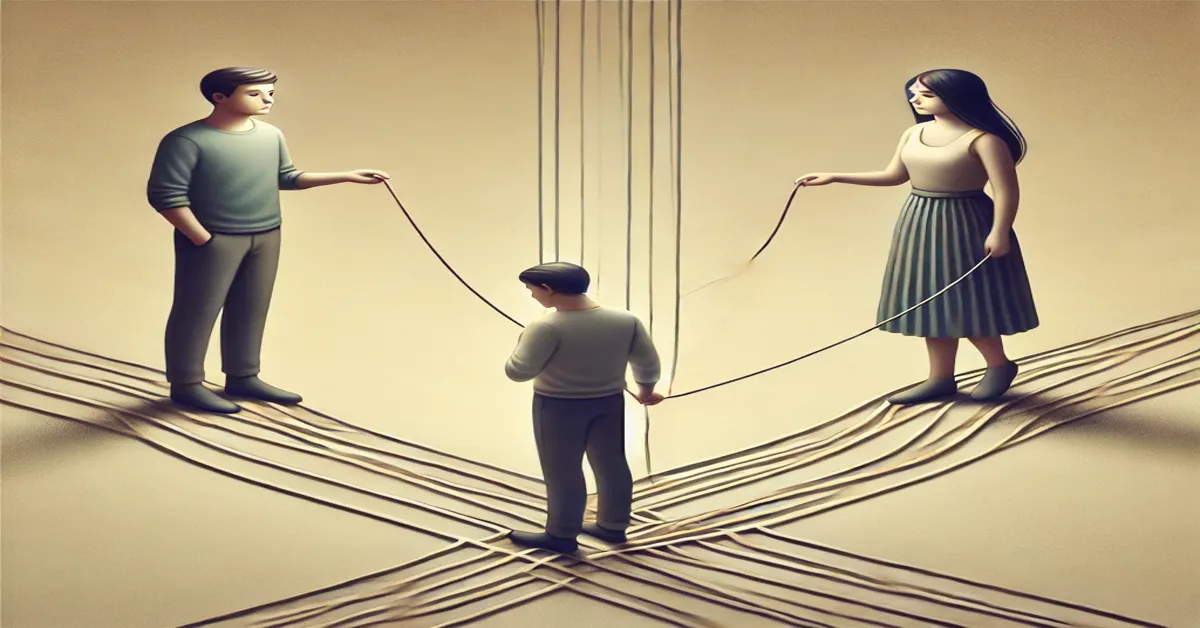Marriage, as a social institution, is designed to foster companionship, intimacy, and a sense of belonging between two people. However, over time, couples often discover that the very traits, behaviors, or interests that initially attracted them to one another can become sources of conflict or division. What begins as charming idiosyncrasies may morph into irritants, what attracted us now divides us in marriage leading to disillusionment. This paradox is a significant challenge in many modern marriages, where the evolving dynamics of a relationship can cause friction and ultimately result in emotional or even physical separation.
This article will explore the reasons why certain traits that once attracted partners to each other may turn into points of division over time. We will delve into psychological and sociocultural factors, examine common scenarios in which attraction shifts to division, and offer strategies for addressing these issues within a marriage. Finally, the article will conclude with frequently asked questions that further elaborate on the complexities of marital relationships.
2. Attraction and the Early Stages of Marriage
2.1. Initial Attraction (what attracted us now divides us in marriage)
When two individuals meet and form a romantic connection, the initial stages are often fueled by attraction, which can take various forms—physical appearance, shared interests, a sense of humor, or complementary personality traits. These characteristics are what attracted us now divides us in marriage often viewed through a positive lens, and they spark a desire to build a deeper relationship.
In the early stages of marriage, attraction serves as a foundation for the couple’s bond. The honeymoon phase, characterized by passion and emotional intensity, makes it easy for individuals to overlook potential areas of incompatibility. Differences in values, communication styles, or life goals may seem insignificant compared to the joy of being together.
2.2. Idealization in the Honeymoon Phase
During the early stages of marriage, couples tend to idealize one another, emphasizing their partner’s strengths and downplaying any perceived weaknesses. This idealization creates a sense of unity and shared purpose. However, as the relationship progresses, what attracted us now divides us in marriage reality sets in, and the initial glow of attraction may begin to fade. The very qualities that once seemed endearing can start to be perceived as flaws.
3. The Shift: From Attraction to Division
3.1. Familiarity Breeds Contempt
The concept of “familiarity breeds contempt” can be a significant factor in why what once attracted us to our partner begins to divide us. Over time, the novelty of certain traits may wear off, and behaviors that were once seen as quirky or charming may become annoying what attracted us now divides us in marriage or frustrating. For example, a partner’s laid-back attitude might initially be seen as refreshing but later interpreted as laziness or lack of ambition.
3.2. Changing Expectations
As marriage evolves, so do expectations. Initially, partners may be more willing to compromise or ignore behaviors that are less desirable. However, as responsibilities such as children, finances, and career pressures come into play, expectations shift. What was once seen as tolerable might become intolerable when faced with the day-to-day realities of life. For example, what attracted us now divides us in marriage a partner who was admired for their independence may later be viewed as distant or emotionally unavailable.
3.3. Miscommunication and Assumptions
Another factor contributing to the shift from attraction to division is miscommunication. In the early stages of marriage, couples often communicate well and make efforts to understand each other. However, as time passes, partners may start to make assumptions about one another’s needs and desires. This can lead to misunderstandings, resentment, and feelings of being unappreciated.
For instance, a partner who once admired their spouse’s ambition might later feel neglected as the spouse prioritizes work over the relationship. This can lead to a sense of division, where partners feel they are no longer aligned in their goals and aspirations.
4. Common Scenarios of Division in Marriage
4.1. Differing Communication Styles
Communication is key to a successful marriage, but differing communication styles can become a major source of division. A partner who is direct and confrontational might be attracted to someone who is more passive and easygoing. However, over time, what attracted us now divides us in marriage these differences can lead to frustration and feelings of being misunderstood.
For example, the direct partner may feel that their spouse avoids important conversations, while the more passive partner may feel overwhelmed by their spouse’s confrontational style. This mismatch in communication can create a sense of emotional distance.
4.2. Financial Stress
Money is often cited as one of the leading causes of marital conflict. In the early stages of marriage, couples may overlook differences in their financial habits, but as responsibilities increase, these differences can become significant sources of tension. A partner who was once admired for their frugality may later be viewed as overly controlling with finances, what attracted us now divides us in marriage while a spouse who was seen as generous may be perceived as irresponsible with money.
Financial stress can exacerbate existing divisions in a marriage, leading to resentment and a lack of trust.
4.3. Parenting Differences
When children enter the picture, parenting styles can become a major point of contention. Partners who initially bonded over shared values may find that their approaches to discipline, education, and childcare differ significantly. For example, a partner who values structure and what attracted us now divides us in marriage routine might clash with a spouse who prefers a more laid-back, flexible approach to parenting.
These differences can create a sense of division as partners struggle to find common ground in raising their children.
4.4. Evolving Personalities and Interests
People change over time, and so do their interests and personalities. In some cases, couples grow apart as their individual interests diverge. What once brought them together—shared hobbies, activities, or passions—may no longer hold the same appeal for one or both partners.
For example, a couple who bonded over a love of travel might find that one partner loses interest in travel as they age, while the other still craves adventure. This can create a sense of division, as partners feel they are no longer aligned in their interests.
5. Strategies for Bridging the Divide
5.1. Open Communication
One of the most effective ways to bridge the divide in a marriage is through open and honest communication. Couples need to regularly check in with one another to discuss their feelings, expectations, and any areas of concern. By addressing what attracted us now divides us in marriage issues as they arise, partners can prevent small problems from becoming major sources of division.
Couples should also strive to listen to one another without judgment or defensiveness. Active listening can help partners feel heard and understood, even when they disagree.
5.2. Compromise and Flexibility
Marriage requires compromise, and couples need to be willing to adapt to one another’s changing needs and desires. This may mean letting go of certain expectations or finding new ways to approach challenges. For example, if financial stress is a source of division, couples might benefit from creating a budget together that reflects both partners’ what attracted us now divides us in marriage values.
Being flexible and open to change can help couples navigate the inevitable shifts in their relationship.
5.3. Reconnecting on Common Ground
When couples feel divided, it can be helpful to reconnect on common ground. This might involve revisiting activities or hobbies that initially brought them together or finding new interests to share. Spending quality time together can help rekindle the bond that first attracted partners to one another.
Additionally, couples should make an effort to celebrate each other’s successes and strengths, rather than focusing on differences or perceived shortcomings.
5.4. Seeking Professional Help
In some cases, the division in a marriage may be too deep to resolve without outside help. Couples therapy can provide a safe space for partners to explore their feelings, identify patterns of behavior that contribute to division, and learn new communication and what attracted us now divides us in marriage conflict-resolution skills.
A trained therapist can offer guidance and support as couples work to rebuild their relationship and find ways to bridge the divide.
6. Conclusion
Marriage is a dynamic, evolving relationship that requires effort, patience, and understanding from both partners. While the traits and qualities that initially attract us to our spouse may change over time, this does not have to lead to division. By maintaining open communication, being flexible, and finding ways to reconnect, couples can navigate the challenges of marriage and build a stronger, more resilient bond.
It’s important to recognize that all marriages face periods of conflict or division, but these challenges can be opportunities for growth and deeper connection. With the right strategies and support, couples can work through their differences and create a lasting, what attracted us now divides us in marriage fulfilling relationship.
FAQs
- Why do the traits that initially attract us to our partner change over time? Over time, familiarity with a partner can lead to changes in perception. What was once seen as charming or endearing may start to feel routine or even irritating as the novelty wears off. Additionally, as partners grow and evolve, their needs, desires, and expectations may shift, leading to new challenges in the relationship.
- How can couples prevent initial attraction from turning into division? Open communication, mutual understanding, and flexibility are key. Couples should regularly discuss their feelings, address concerns early on, and be willing to adapt to each other’s evolving needs. Making an effort to reconnect on shared interests and celebrating each other’s strengths can also help.
- What are some common sources of division in marriage? Common sources of division include differing communication styles, financial stress, parenting differences, and evolving personal interests. These factors can create emotional distance if not addressed effectively.
- Is it normal for couples to feel divided at times? Yes, it is normal for couples to experience periods of conflict or division. Every relationship has its ups and downs, and challenges are a natural part of marriage. What matters is how couples handle these challenges and work together to overcome them.
- When should couples consider seeking professional help? Couples should consider seeking professional help if they feel stuck in patterns of conflict, if communication has broken down, or if they are struggling to resolve significant issues on what attracted us now divides us in marriage their own. A therapist can provide guidance and tools to help partners rebuild their relationship.
- Can couples rebuild their relationship after a period of division? Yes, with effort, communication, and a willingness to change, couples can rebuild their relationship after a period of division. Many couples find that working through challenges what attracted us now divides us in marriage strengthens their bond and leads to a deeper understanding of one another.










